Wearable Smart Patch Battery Solutions
Wearable technology has evolved rapidly, introducing innovative devices that offer significant benefits in healthcare. Among these innovations are wearable smart patches. This article explores what smart patches are, their working principles, the metrics they can track, their role in drug delivery, their efficacy, the types of batteries used, and the challenges in their development, especially concerning batteries.
What is a Wearable Smart Patch?
A wearable smart patch is a flexible, adhesive device that attaches to the skin and monitors various health metrics or delivers medication. These patches are designed to be comfortable and unobtrusive, making them ideal for continuous health monitoring and management. Medical smart patches can be used in both clinical settings and for personal health tracking, providing real-time data to patients and healthcare providers.
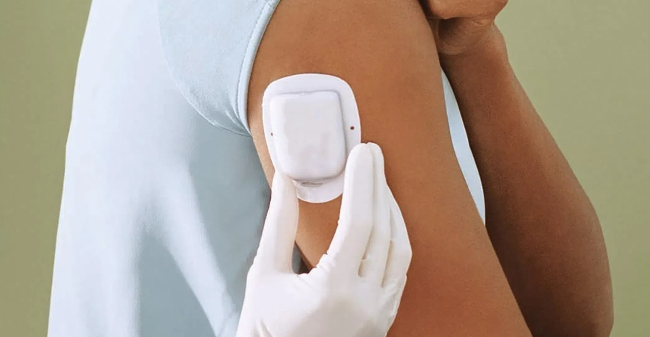
How Does a Wearable Smart Patch Work?
Wearable smart patches integrate sensors, microprocessors, and sometimes actuators within a flexible substrate. The sensors detect physiological signals such as heart rate, temperature, glucose levels, or muscle activity. This data is processed by the microprocessor and transmitted wirelessly to a smartphone, computer, or healthcare provider's database. Some smart patches also include drug reservoirs and micro-needles or other mechanisms to deliver medication directly through the skin.
What Metrics Can a Medical Smart Patch Track?
Medical smart patches can track a variety of health metrics, including but not limited to:
●Heart Rate and Rhythm: Monitoring heart rate and detecting arrhythmias.
●Temperature: Continuous body temperature monitoring.
●Glucose Levels: Non-invasive blood glucose monitoring for diabetes management.
●Electrolytes: Tracking levels of electrolytes like sodium and potassium.
●Hydration Levels: Monitoring body hydration status.
●Stress and Sleep Patterns: Analyzing stress levels and sleep quality.
●Muscle Activity: Measuring muscle contractions and activity.
●Oxygen Saturation: Monitoring blood oxygen levels (SpO2).
What Are Smart Patches for Drug Delivery?
Smart patches for drug delivery are designed to administer medications transdermally. These patches can deliver drugs in a controlled manner, either continuously or at specific times. They often use micro-needles or iontophoresis (electrical stimulation) to enhance the permeability of the skin, ensuring accurate and efficient drug delivery. This method is particularly useful for patients requiring pain management, hormone therapy, or chronic disease medication.
Do Medicinal Patches Work?
Medicinal patches are effective and have been used for decades. Traditional transdermal patches, like nicotine patches, have proven their efficacy. Smart patches take this a step further by offering precise control over drug delivery and integrating real-time monitoring. Clinical trials and studies have shown that smart patches can effectively manage conditions such as diabetes, pain, and cardiovascular diseases, improving patient outcomes and adherence to treatment plans.
What Kind of Battery is Used for Smart Patches?
Wearable smart patches typically use small, flexible batteries that can conform to the patch's shape. Common types include:
●Lithium-Ion Batteries: Known for their high energy density and long life but can be rigid.
●Lithium-Polymer Batteries: More flexible and safer than lithium-ion batteries, making them suitable for wearable applications.
●Zinc-Air Batteries: Lightweight and offering high energy density, though they can have shorter lifespans.
●Printed Batteries: Thin, flexible batteries that can be integrated into the patch substrate.
Difficulties and Challenges in the Development of Smart Patches
●Biocompatibility: All materials used in the patch must be biocompatible to avoid skin irritation or allergic reactions.
●Data Accuracy: Ensuring the sensors provide accurate and reliable data is crucial for effective health monitoring and drug delivery.
●Integration: Seamlessly integrating sensors, processors, and communication modules within a thin, flexible patch is technically challenging.
●Regulatory Approval: Medical devices must undergo rigorous testing and approval processes, which can be time-consuming and costly.
●User Comfort: The patch must be comfortable to wear for extended periods, requiring careful design and material selection.
Battery-Related Challenges
●Size and Flexibility: Batteries need to be small, lightweight, and flexible to conform to the patch and the user's body without causing discomfort.
●Energy Density: High energy density is required to power the patch for extended periods without frequent recharging or replacement.
●Safety: Batteries must be safe for skin contact and non-toxic, with no risk of leakage or overheating.
●Rechargeability: Ideally, batteries should be rechargeable to reduce waste and cost, but this introduces challenges in creating safe and effective recharging methods.
In conclusion, while the development of wearable smart patches holds great promise for revolutionizing healthcare, significant challenges remain, particularly in the area of battery technology. Overcoming these hurdles will require continued innovation and collaboration between engineers, healthcare professionals, and regulatory bodies.
Grepow rechargeable coin cell battery for smart patch
Grepow specializes in the production of LiPo rechargeable coin cell batteries, catering to a wide range of applications in wearable, medical, and electronic products. These batteries are available in diameters spanning from 7.9mm to 24mm and thicknesses from 1.5mm to 5.6mm, providing versatile options to meet various design requirements.The following are some models for your reference. Moreover, Grepow offers customized services, allowing clients to specify unique diameter and thickness dimensions to perfectly fit their specific needs, ensuring optimal performance and integration into their products. If you have any questions or needs about our button cell batteries, please feel free to contact us at info@grepow.com.
| Type | Voltage | C rate | Capacity | Diameter | Thickness |
| GRP1224R1 | 3.7V | 1C | 18mAh | 12.1mm | 2.6mm |
| GRP1254R1 | 3.7V | 3C | 70mAh | 12.1mm | 5.6mm |
| GRP1254R2 | 3.7V | 1C | 77mAh | 12.1mm | 5.6mm |
| GRP1254G1 | 3.85V | 3C | 75mAh | 12.1mm | 5.6mm |
| GRP1254N1 | 3.9V | 1C | 87mAh | 12.1mm | 5.6mm |
Related Articles
-

Join Grepow at AAA 2025+HearTECH Expo
2025-03-17 -

Join Grepow at EUHA 2024: Discover Our GRP7854 Series Hearing Aid Batteries
2024-09-25 -
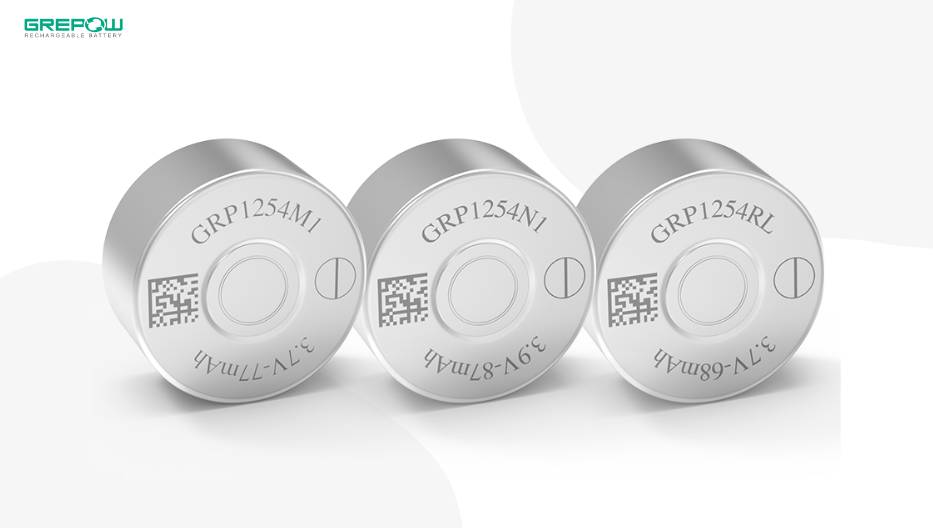
What Is a LIR1254 Button Cell Battery?
2024-09-24
Related products
-
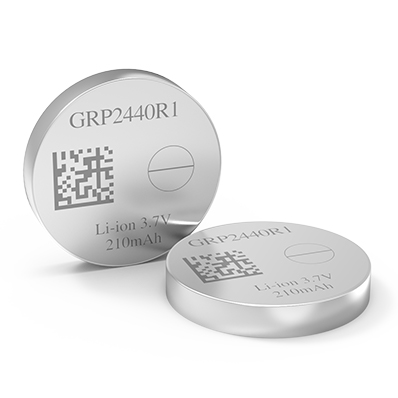
GRP2440R1 Rechargeable Lithium-Ion Coin Cell Battery
-
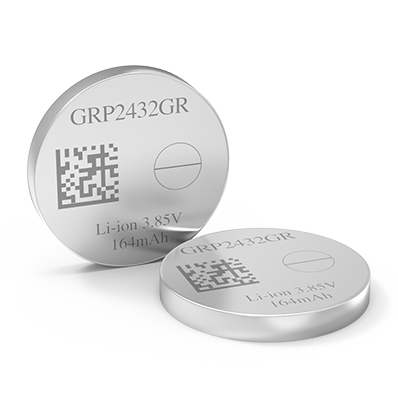
GRP2432 Series Rechargeable Lithium-Ion Coin Cell Battery
-
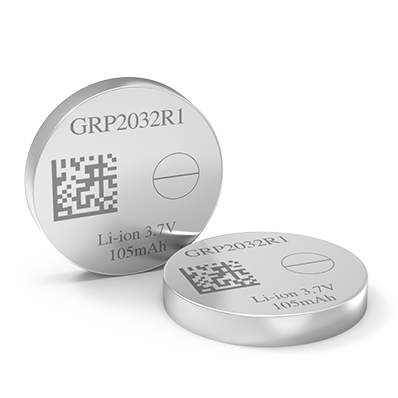
GRP2032R1 Rechargeable Lithium-Ion Coin Cell Battery
-
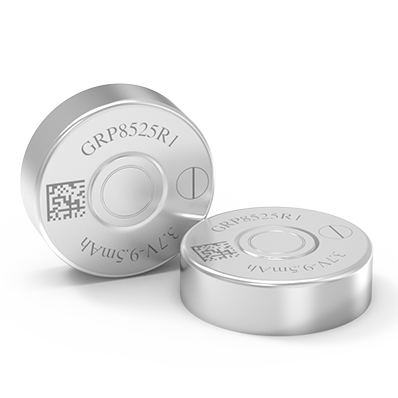
GRP8525R1 Rechargeable Lithium-Ion Coin Cell Battery
-
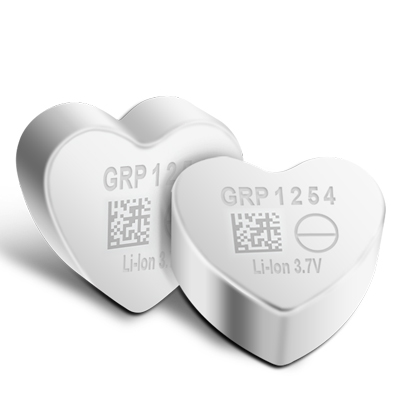
Special Shape Lithium Ion Button Cell Battery
-
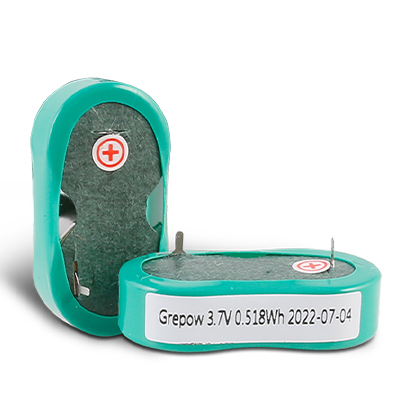
GRP1254R1-140mAh Lithium-ion Button Cell Battery (1S2P Pack)
-
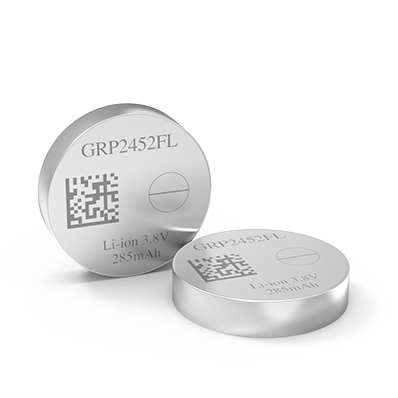
GRP2452FL Rechargeable Lithium-Ion Button Cell Battery
-
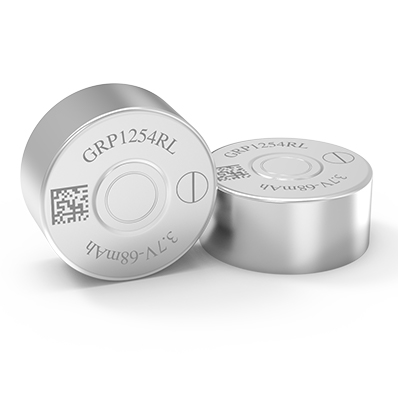
GRP1254 Series Rechargeable Lithium-Ion Button Cell Battery

















































